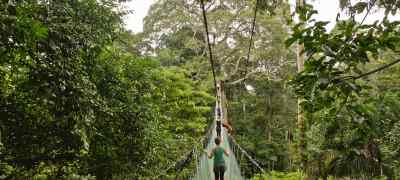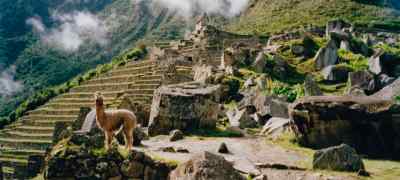By Rachael Funk
Among the oldest civilizations on earth, the early people of South America are famous for their large empires and intricate architectural feats. Some aspects of their history are shrouded in the unknown and are still under the investigation of experts. The remaining clues of how their society functioned are still waiting to be understood. Here are some unanswered questions about the history of South America and the popular theories that may explain them.
Sacsayhuaman, Peru
This fortress constructed just outside of the former Inca capital of Cusco is the subject of much debate. Based on the tight fit of each of the heavy stones making up the structures in this area, archaeologists and other scientists are stumped as to how this was done. Tools excavated from the quarries such as hammers, chisels, and metal bars suggest the boulders were shaped by sheer strength and exact measurements. Though it is certainly reasonable to wonder if the stones were all hand carved or hammered into shape, others believe the sides of the stones were heated to a melting point then fitted into place next to boulders which had already cooled. This theory would mean the Incas had a way to heat the boulders to over 2,000 Fahrenheit and the builders had some kind of power saws and drills to cut the blocks.
A third hypothesis is that a plant existed at the time that had a chemical property that could soften stone. British archaeologist Lieutenant Colonel Percy Fawcett, who was ridiculed by scientists for claiming to have seen and shot a 62-foot long anaconda, detailed an experience with such a chemical during an expedition to Peru and Bolivia. He noted finding a jar with unknown contents that, when broken, changed the consistency of the rock it spilled on to wet cement. If a plant with such properties existed, it would certainly make shaping the stone faster and easier than chiseling a solid foundation.
Nazca Lines, Peru
The Nazca Lines were designated in 1994 as a UNESCO World Heritage Site. A series of enormous lines and symbols etched into the ground and estimated to be 1500 – 2000 years old, these precise drawings have been a mystery since their discovery in the early 1900s. The Nazca people, not to be confused with the Incas, were also very religious and much of their livelihood was dependent upon growing crops. Some speculate these images and symbols could have been created as offerings to the gods, to garner favor with them for good crops.
Marie Reiche, who spent over half her life studying and mapping the lines, theorized these were created as a mental exercise to show off the Nazca command of geometry. Another hypothesis says that the lines could have been a predecessor to the Inca ceque system, which designated a series of ritual pathways and marked sacred ground. And, of course, one of the most infamous guesses is that some of the long, straight lines were cut into the ground by landing spaceships from other planets.
Lake Titicaca, Peru and Bolivia
The highest navigable lake in the world, Lake Titicaca is a natural border between Peru and Bolivia. According to Andean legends, this lake was the birthplace of the Incas, whose spirits would return to the lake after death. About 17 years ago, the ruins of a temple were found deep in the lake. Estimated to predate the Incas, a terrace for crops, a road, and a 2,600 foot long wall were also found by archeologists over the span of 200 dives.
Continued research in 2013 also recovered several artifacts from different eras. The existence of these underwater discoveries could be explained by old legends of massive floods and torrential rain; many stories attribute the disasters as retribution from the gods. Though scientists, archeologists, and historians consider the cause of the overflow to be allegorical, research suggests flooding did change the water level in the lake and forced the inhabitants to relocate.
Puma Punku, Bolivia
The city of Tiwanaku in western Bolivia is said to be where Lord Viracocha created the world. One of the world’s ancient mysteries, Puma Punku predates the Inca. The intrigue of this site is in the complexity of the precise stonework found in the ruins. Detailed work such as meticulous carvings and exact, interlocking stone pieces with no chisel or tool marks to be found have researchers scratching their heads. The site also holds a complex irrigation system with holes drilled so perfectly into the stone, their creation and endurance is nothing short of wondrous.
Puerta del Sol, Bolivia
Also located in Tiwanaku, what is left of the Gate of the Sun stands among ruins and dates back to 14,000 BC, according to some (disputed) researchers. Nearly 10 feet tall and carved from a single stone, it is estimated to weigh about 10 tons. When discovered in the 19th century by explorers, the giant stone was cracked and lying on its side. Now, it has been re-erected where it was found but it is believed that this is not its original site. The original location of this megalith is unknown.
The carvings on the stone lead some to believe this monument was used as a calendar, to mark the passage of time. Others believe the symbols hold astronomical connotations. Based on the images carved into the stone, many believe this could have once been a portal to another dimension, or some kind of Stargate to other planets.














